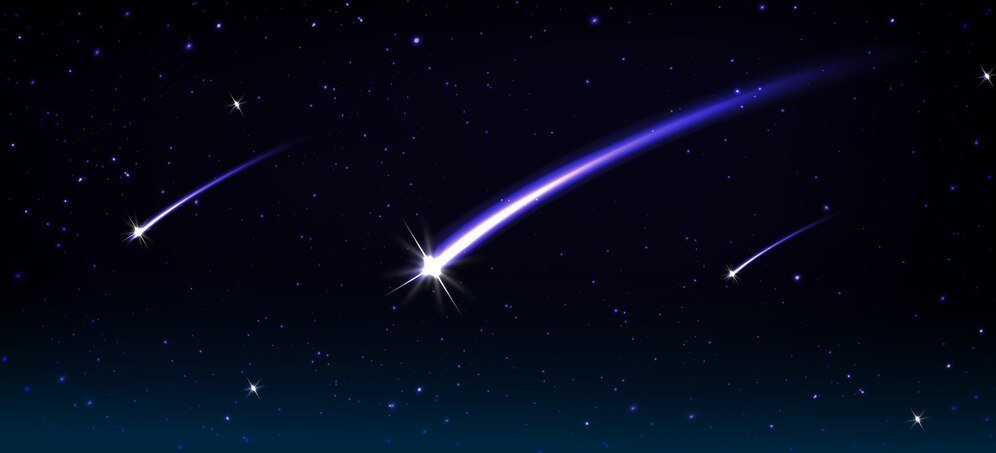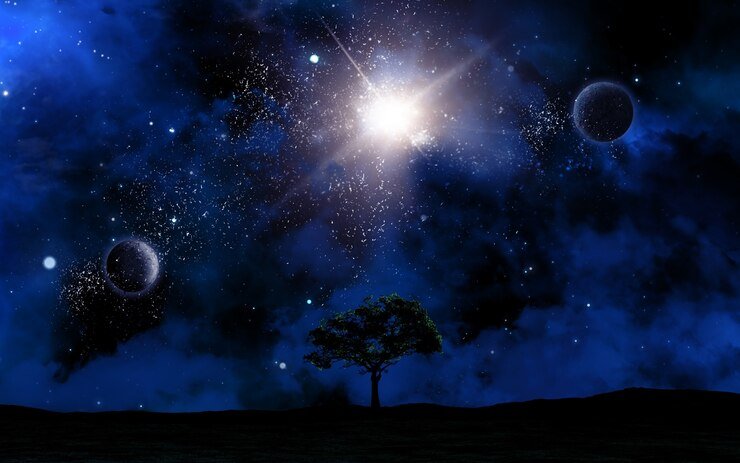Have you ever wondered why Stars-923 has captured global attention, unlike countless other stars in the vast expanse of the universe?
Among millions of stars that illuminate the night sky, Stars-923 stands out due to its astronomical significance. However, the intrigue surrounding Stars-923 goes beyond mere celestial phenomena—it offers insights into stellar evolution, cosmic chemistry, and the study of celestial bodies.
In this article, we will explore the fascinating world of Stars-923, including its formation, evolution, significance, and much more. Let’s dive into the mystery and wonder that this star cluster holds.
Table of Contents
Quick Overview of Stars-923
Stars-923 is a specific classification of stars found within the Milky Way galaxy. Sometimes referred to as part of the Elliptical Galaxy or a Major Constellation, these stars belong to the G-type main-sequence, similar to our sun. Below, we highlight the key characteristics of Stars-923 that make it a subject of interest in the field of astronomy.

Key Characteristics of Stars-923:
- Distance from Earth: Located approximately 500 light-years away.
- Mass: About 1.2 times the mass of the sun.
- Temperature: An estimated 5,800 Kelvin, slightly higher than the sun.
- Color: Bright yellowish-red hue, resembling the sun.
Formation and Evolution of Stars-923
The formation of Stars-923 is similar to that of other stars, typically originating in stellar nurseries or molecular clouds. Stars-923 formed when gas and dust accumulated in a region with high pressure and gravity, triggering nuclear fusion that eventually led to the birth of these stars.
Astronomers consider Stars-923 to be a young star cluster that is still gathering mass from its parent molecular cloud and going through early evolutionary stages. During peak evolution, smaller stars may shed their outer layers and transform into white dwarfs. However, massive stars, like those in Stars-923, have the potential to explode into supernovae, possibly leaving behind black holes.
Interpretations of Stars-923 in Astronomy
Stars-923 has captured the attention of astronomers and researchers who are still studying its properties and significance. While there is much yet to uncover, two primary interpretations of Stars-923 have emerged:
1. Celestial Body:
Some researchers view Stars-923 as a new star cluster, noting its unique composition, color, and structure. They believe it offers clues to better understand the formation of stars and galaxies, particularly within the Milky Way.
2. Space Exploration:
Stars-923 has also been the subject of interest in future space exploration missions. Due to its characteristics and location, scientists are investigating potential exploration missions aimed at studying Stars-923 more closely. In the coming years, we may see collaborations and missions that explore this star cluster in greater detail.
Myths and Facts about Stars-923
As with any significant astronomical discovery, Stars-923 has generated a fair share of myths alongside factual interpretations. Let’s clear up some common misconceptions about this star cluster:
Myth: Stars-923 is a completely new celestial phenomenon.
Fact: While Stars-923 is notable for its unique characteristics, it shares many similarities with other G-type main-sequence stars, including the sun.
Myth: Stars-923 will soon become a black hole.
Fact: Although some stars in the Elliptical Galaxy have the potential to evolve into supernovae, not all of them will result in black holes.
The Future of Stars-923 Research
Ongoing research into Stars-923 continues to unveil new discoveries. As astronomers gain a deeper understanding of this star cluster, it opens doors for future studies into galactic evolution, cosmic chemistry, and the lifecycle of stars.
With upcoming space missions on the horizon, scientists hope to gather more data about Stars-923 and its role within the broader context of the Milky Way galaxy. This star cluster will likely remain a focal point in the field of astronomy for years to come, as its evolution unfolds.
Myths and Facts Surrounding Stars-923
The fascinating celestial body known as Stars-923 has garnered significant attention within both scientific and popular culture. This interest has led to a blend of myths and facts about this remarkable star. In this article, we will explore both the myths and facts associated with Stars-923.
1. Myths
The Megastructure Theory
One of the most popular myths surrounding Stars-923 is the Megastructure Theory. Some theorists propose that this star is part of an enormous structure built by advanced extraterrestrial civilizations to harness energy. This myth arose from the unusual fluctuations in the star’s brightness. However, despite extensive research, scientists have found no credible evidence to support this theory, which remains more rooted in science fiction than in scientific fact.
Cosmic Celebrity
Stars-923 has also become a “cosmic celebrity” due to its unpredictable changes in brightness and temperature. Pop culture enthusiasts often romanticize this star, yet astronomers continue to investigate the underlying astrophysical processes responsible for these variations. While some researchers propose potential explanations, no definitive theory has been established to date.
2. Facts
Light Volatility
Stars-923 is known for its unpredictable light emissions, setting it apart from most stars that exhibit fluctuations due to temperature changes or surrounding dust. This variability categorizes Stars-923 as a type of variable star, heavily influenced by the gravitational pull of nearby planets. This insight into its light volatility provides clarity on the star’s behavior.
Stellar Characteristics
Stars-923 boasts a diameter approximately ten times that of our Sun, making it significantly larger and brighter. Its sheer size contributes to its distinctive red hue, which can be observed even with the naked eye on clear nights, adding to its allure for stargazers and astronomers alike.
Uncovering Technological Advancements in Studying Stars-923
Recent advancements in technology have revolutionized the study of Stars-923. Here are some key innovations making research in 2024 more efficient and insightful:
1. Computerized Telescopes
Modern computerized telescopes equipped with high-resolution cameras allow astronomers to capture stunning, detailed images of Stars-923. Previous telescopes often produced blurry images due to atmospheric disturbances. Advanced optics from instruments like the Hubble Space Telescope and NASA’s James Webb Space Telescope enable clearer views, facilitating in-depth study of supernovae and other celestial phenomena.
2. Spectroscopy
Spectroscopy is a crucial method employed by astronomers to analyze the light emitted from Stars-923. By examining this light, scientists can glean important information about the star’s composition, temperature, and age, as well as detect elements that are otherwise invisible to the naked eye. This technique plays a vital role in expanding our understanding of stellar formation and evolution.
3. Data Analytic Technology
The integration of artificial intelligence (AI) and machine learning (ML) into astronomical research has transformed how data related to Stars-923 is analyzed. These technologies assist in categorizing stars by their ages, distances, and densities, streamlining processes that were once labor-intensive and time-consuming.
New technological innovations are enhancing researchers’ abilities to study the intricate composition of Stars-923 in unprecedented detail.
The Role of Stars-923 in Cosmology
Cosmology, the study of the universe’s origins and evolution, greatly benefits from insights gained through Stars-923. Here’s how this star contributes to our understanding of the cosmos:
Theories and the Universe
Stars-923 serves as a natural laboratory for testing various theories regarding the universe’s inception and development. Insights gained from studying this star have enriched our knowledge of dark matter, the Big Bang, and stellar evolution.
Observing Patterns and Trends
By analyzing Stars-923’s characteristics, scientists can identify cycles, trends, and patterns among stars. This understanding aids in comprehending the overall structure and evolution of the universe.
Universe’s Age and Dark Energy
Research on Stars-923 has also enabled scientists to estimate the age of the universe. By examining its surrounding environment and characteristics, researchers have unlocked key insights into the nature of dark matter and dark energy, two of the universe’s greatest mysteries.
Stars-923 is undeniably a crucial asset for advancing our understanding of cosmic evolution and energy dynamics.
Future Prospects of Star Exploration
With ongoing technological advancements, the future of star exploration looks promising. Astronomers are engaged in various projects and missions designed to expand our cosmic knowledge and address persistent mysteries.
1. Interstellar Missions
Recent developments include the launch of new space probes that have exited our solar system, aiming to explore interstellar space. These missions are pivotal for studying stellar environments, detecting exoplanets, and measuring stellar properties.
2. Global Collaboration
Astronomers worldwide are collaborating to enhance the study of stars, including Stars-923. By sharing data and resources, researchers can deepen their understanding of stellar formation and evolution, taking star exploration to unprecedented heights.

Conclusion
Stars-923 is not merely an ordinary star; it provides profound insights into the cosmic realm, celestial bodies, and the universe’s evolution. The mysteries surrounding this star challenge astronomers to delve deeper and uncover the truths of the cosmos.
Whether you are an avid astrophile, an enthusiastic astronomy buff, or simply a curious stargazer, Stars-923 serves as a captivating reminder of the wonders that await in the universe.
Frequently Asked Questions
- What is Stars-923?
Stars-923 is a remarkable celestial body known for its unpredictable brightness and significant size.
- What technological advancements aid in studying Stars-923?
Key advancements include computerized telescopes, spectroscopy, and AI data analytics.
- How does Stars-923 contribute to cosmology?
Stars-923 aids in testing theories about the universe’s origin, age, and the nature of dark energy.
- What are the future prospects for exploring Stars-923?
Future projects include interstellar missions and global collaborations among astronomers.
- Can Stars-923 be seen without a telescope?
Yes, Stars-923 can often be seen with the naked eye on clear nights due to its size and brightness.
For any kind of updates please visit secretclasss



